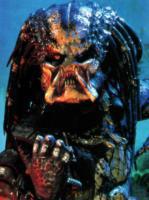
Space Monsters[ Book Contents]

Predators[Nimrod Antal, 2010] is the latest sequel.
Space Monsters[ Book Contents]
Independence Day [Roland Emmerich, 1996]
One of Emmerich’s movies of mass destruction, this time an all-out alien attack on Earth that is eventually thwarted by Will Smith’s heroic jet pilot and Jeff Goldblum, using a laptop computer (in one of the all-time inane plot devices). A ridiculous, but very entertaining film. Emmerich destroyed the White House again in his 2012[2009], this time with a tidal wave tossing an aircraft carrier onto it!
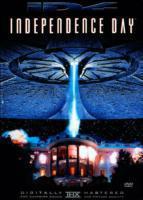
Space Monsters[ Book Contents]
Paul [Greg Mottola, 2011]
Two English sci-fi geeks (Simon Pegg and Nick Frost) embark on a road trip across the US and have a close encounter of the third kind with an alien slacker (voiced by Seth Rogan) who is being pursued by mysterious government agents.
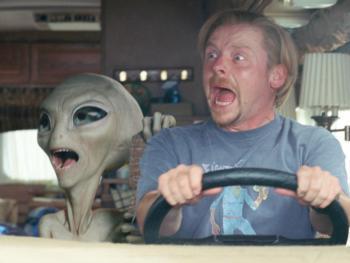
Space Monsters[ Book Contents]
The Thing From Another World [aka The Thing, Christian Nyby, 1951]
Generally assumed to have been directed by producer Howard Hawks, this taut suspense thriller about a group of soldiers and scientists in the Arctic who find something in the ice is a bona fide classic.
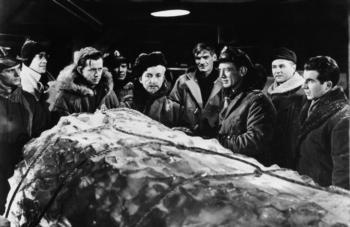
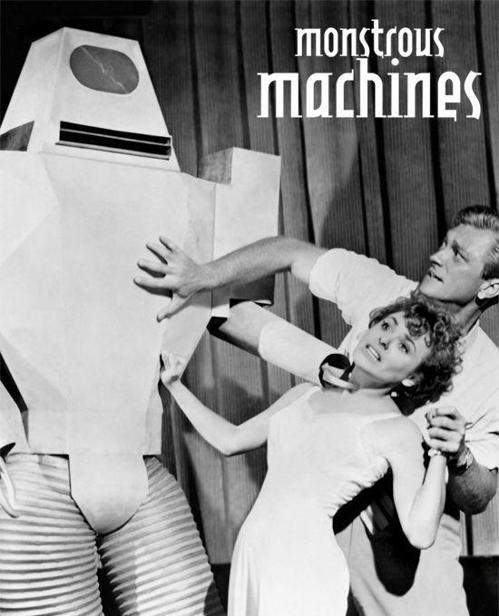
Target Earth[Sherman A. Rose, 1954] Richard Denning and Kathleen Crowley are threatened by an invasion of alien robots from Venus!
MONSTROUS MACHINES
Apart from the obvious advantages in manufacturing, transportation, agriculture, and communication it has given us, the Industrial Revolution has a lot to answer for: The clear and increasing damage that man-made pollution is doing to our planet, and all of the robots, automobiles, and computers that run amuck in the cinema! In the movies, machines turn on us with remarkable regularity. From malicious cars [ Christine, John Carpenter, 1983] to malicious television sets [ The Twonky, Arch Oboler, 1953], the movies have no doubts that our machines are untrustworthy.
Silent film’s most famous robot would have to be the Machine Man disguised as the character Maria in Fritz Lang’s iconic Metropolis[1927]. Another fabulous mechanical man, Robby the Robot, was introduced to us in Forbidden Planet[Fred M. Wilcox, 1956]. Robby was the first movie robot to speak with the robotic voice we now associate with all computers. His 1950s “space-age” design, with its revolving antennae, plastic dome, and many moving parts was such a hit that MGM immediately starred Robby in his own feature, The Invisible Boy[Herman Hoffman, 1957].
Another particularly memorable movie robot is Gort, which accompanies the alien Klaatu (Michael Rennie) on his mission to Earth in The Day the Earth Stood Still[Robert Wise, 1951]. In this elegant Cold War film, the populations of other worlds, concerned about the brutality of mankind, send Klaatu to warn Earthlings of the dangers of atomic power. If Earthlings attempt to expand their propensity for violence into outer space, Gort and his fellow robot enforcers will destroy us. So never forget the words, “Klaatu barada nikto.” A good reason to see The Day the Earth Stood Stillis to learn just what those words mean, so you will be prepared the next time a flying saucer from another world lands on the Mall in Washingon, D.C.
Cold War paranoia also fuels Gog[Herbert L. Strock, 1954], where two robots, Gog and Magog, are being controlled by secret radio signals to sabotage an American space station. In The Colossus of New York[Eugène Lourié, 1958], a brilliant young scientist is killed in a car crash on the eve of winning the Nobel Peace Prize. His brain-surgeon father transplants the young scientist’s brain into the skull of a large robot—a bad idea for all concerned.
Far eclipsing the brain power of a human mind, computers’ processing capabilities have always made us nervous. This concern is reflected in a whole series of movies where computers attempt to take over the world. In Joseph Sargent’s suspenseful Colossus: The Forbin Project[1970] and in Stanley Kubrick’s seminal science-fiction epic 2001: A Space Odyssey[1968], computers come to the logical conclusion that humans are incapable of making correct decisions and take steps to relieve them of that responsibility. In The Forbin Project, the supercomputers respectively placed in control of the American and Soviet nuclear arsenals join forces “for the betterment of mankind” with terrifying results. In 2001, HAL, the onboard computer of the spacecraft Discovery One (given a calm but creepy monotone voice by actor Douglas Rain), comes to believe that the human crew will jeopardize the Jupiter Mission (to find the source of a mysterious black monolith discovered on the Moon), and begins to murder them one by one. In a chilling sequence, HAL kills the astronauts who are in suspended animation, their deaths displayed in the flatlining of their life-support systems. HAL then tricks the two remaining astronauts (Keir Dullea and Gary Lockwood in brilliant, underrated performances) into going outside into space. HAL murders one of them and refuses entry to the other. The astronaut repeatedly orders: “Open the pod bay doors, HAL.” HAL finally responds, “I’m afraid I can’t do that, Dave.” The astronaut literally blows his way back into the ship and gives HAL a lobotomy in an unsettling, starkly beautiful scene.
Another movie featuring machines running out of control is Westworld, written and directed by Michael Crichton [1973]. Westworldwas inspired when Crichton took his kids to Disneyland. He wondered what would happen if the audio-animatronic pirates on the Pirates of the Caribbean ride began to kill the passengers. Notable for the perfect casting of Yul Brynner as a Western gun-slinging robot relentlessly pursuing hapless tourist Richard Benjamin, Westworldis the obvious model for James Cameron’s low-budget classic The Terminator[1984], in which Arnold Schwarzenegger plays a relentless robot from the future. A smart and well-made action sci-fi movie, Cameron topped it with the dazzling Terminator 2: Judgment Day[aka T2, 1991]. With a bigger budget, terrific stunt work, revolutionary computer generated images, and Stan Winston’s superb make-ups and puppetry, Cameron delivered a truly spectacular movie. This film not only made the bad guy Terminator from the first film into a good guy, it also introduced the awesome T-1000 robot, played by Robert Patrick with the help of some extraordinary special effects.
Isaac Asimov’s classic and influential collection of short stories I, Robotwas published in 1950. Asimov’s “Three Laws of Robotics” (1. A robot may not injure a human being or, through inaction, allow a human being to come to harm. 2. A robot must obey any orders given it by human beings, except where such orders would conflict with the First Law. 3. A robot must protect its own existence as long as such protection does not conflict with the First or Second Law) set the standards for practical artificial intelligence. I, Robotwas made into an underwhelming, CG-laden, Will Smith vehicle in 2004 by Alex Proyas.